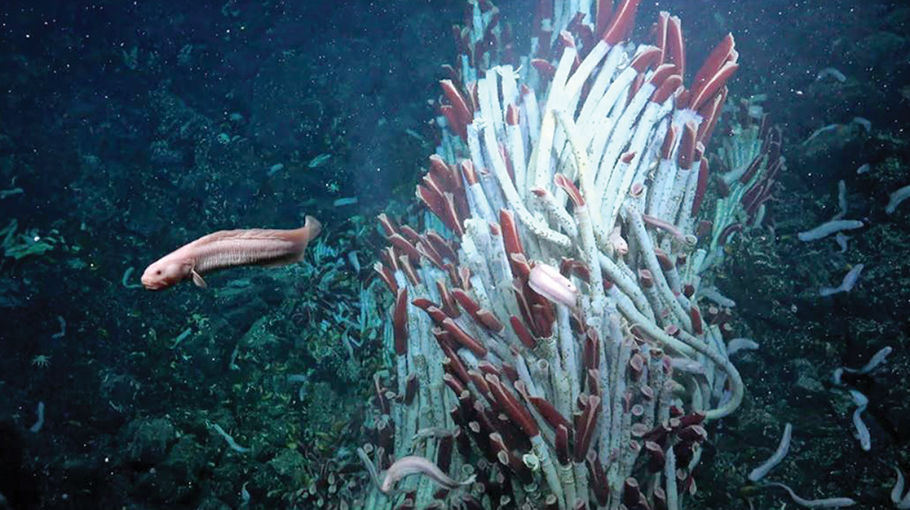Life finds a way
Tubeworms thrive beneath ocean floor


New research reveals that animal life is thriving beneath the seafloor at deep-sea hydrothermal vents. This finding indicates that these mysterious environments have complex ecosystems.
Olivia Ferrari wrote the story, which was posted on National Geographic on Tuesday.
Previous studies identified microbes living near hydrothermal vents, but this is the first time larger animals, like worms and snails, have been found in these underground habitats. Hydrothermal vents occur where Earth's tectonic plates meet, allowing seawater to mix with magma from below. While much of the ocean floor seems inhospitable, life around these vents is abundant.
Communities of shrimp, crabs, tubeworms, mussels, and many unique species, known as “extremophiles,” flourish in these extreme conditions. These organisms do not rely on sunlight for energy; instead, they thrive on nutrients created when seawater interacts with magma.
Despite this, only 26 percent of the global seafloor has been mapped, leaving much still unknown. “Every study confirms how little we understand about the seafloor,” says Rachel Lauer, a geologist at the University of Calgary.
An unexpected discovery
Marine biologist Sabine Gollner and her team at the Royal Netherlands Institute for Sea Research set out to study tubeworms in July 2023. They travelled to the East Pacific Rise, a volcanically active ridge in the Pacific Ocean, and used a remotely operated robot to explore a hydrothermal vent 8,251 feet deep.
While attempting to collect rock samples, the robot uncovered hidden cavities filled with warm, magma-mixed water. It revealed tubeworm larvae and other species previously only found on the seafloor's surface.
This discovery could reshape our understanding of tubeworm life cycles. Researchers suggest that tubeworm larvae might disperse through these cavities, with some settling and growing in cracks while others remain in the warm waters. “The hydrothermal vent ecosystem includes life beneath the surface,” says Gollner.
Protecting deep-sea life
One major threat to these ecosystems is proposed deep-sea mining for valuable minerals like cobalt and nickel. Scientists and conservation groups oppose this practice. “We don’t know how extensive these connected caves are or the biodiversity they support,” warns Lauer.
To protect these fragile habitats, large areas of the seafloor must be safeguarded. “We need to understand what’s there before potentially destroying it,” adds Heather Olins, a biologist at Boston College.
Gollner emphasises the importance of studying these habitats to understand how life can exist beyond Earth.
Places like Jupiter’s moon Europa, which has a hidden ocean beneath an icy crust, could host similar extremophiles. “There’s no reason why there couldn’t be hydrothermal-vent-like life elsewhere in our solar system,” Olins concludes.




